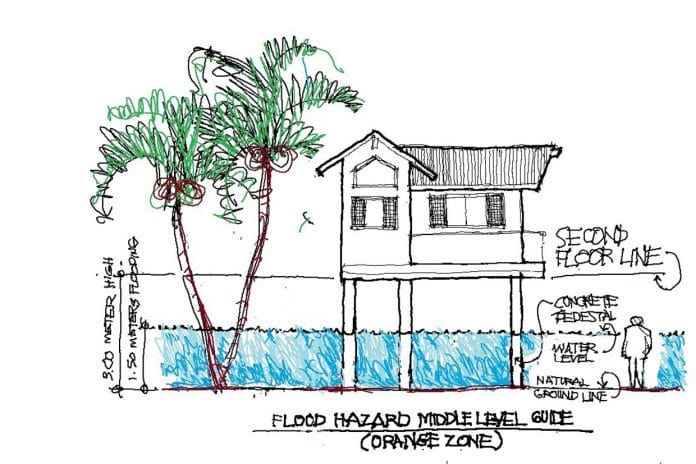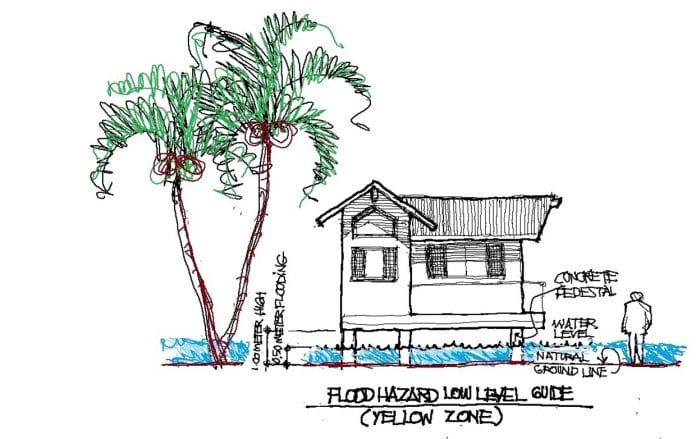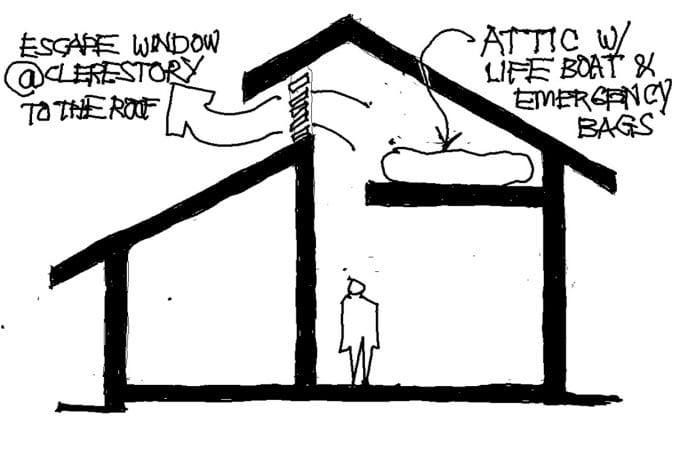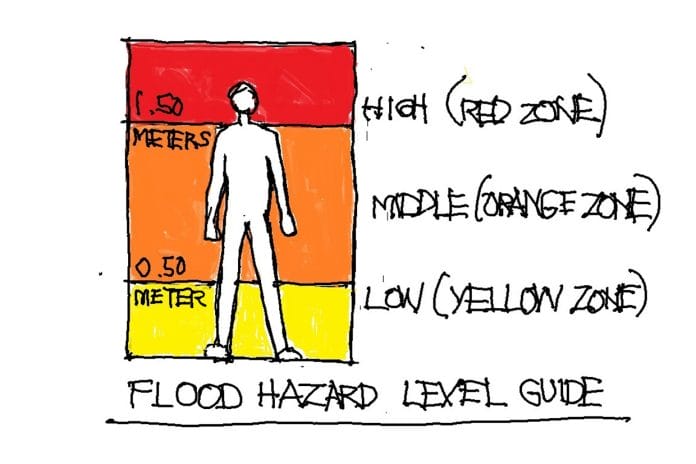The World Risk Report mentioned the Philippines last January as the ninth most disaster-prone country in the world, out of 180 countries assessed. The Global Climate Risk Index released in 2018 said it was the fifth country most affected by natural calamities.
In the recent typhoons that struck the Philippines, many lives and properties were ruined by flooding. So, before thinking about flood-resilient designs, do your due diligence when securing a property in a flood-prone area.
1) Know the history and current developments in the locality. Check with the barangay and people surrounding the property.
2) Go to the City Planning and Development Office and check the classification of the land. Know what can and cannot be put up on the property.

3) Seek professional advice. Consult an architect for the viability of putting up a structure on that property. Consult a geodetic engineer and check the terrain condition if it is above floodwater levels. Seek the opinion of a structural engineer for the load-bearing capacity of the soil.
4) Counter-check with government agencies such as the Land Management Bureau (LMB), local government unit (LGU), Philippine Institute of Volcanology and Seismology (PHIVOLCS), and Department of Environment and Natural Resources (DENR) for the elevation of the property in relation to the highest sea level, and the LGU and Department of Public Works and Highways (DPWH) future developments in the area, which may increase flooding incidents in the community.
5) Check the place’s flood hazard levels with the barangay.

6) Approach the local government for a disaster risk management assessment of the area. If the property is along the coastal area, consider coastal hazards such as storm surges. And if the area is inland, consider possible landslides brought by earthquakes or other weather hazards, such as flash floods in mountain areas, even mudflows and lahar.
7) Inquire further with the City Planning Office and other reputable agencies about geohazard mappings, which may affect the property.
8) Most importantly, use common sense. Should you build in flood-prone and low-lying areas? Should you build near a river? Should you build beside vertical hills or mountains prone to possible landslides? Should you build near mountain slopes and risk your place to mudflows and lahar when heavy rainfall occurs? And should you build on known earthquake fault lines?

9) Lastly, when you decide to build, consult your architect regarding flood-resilient structures, sturdy materials to be used in the construction, and the design approach.
Moving forward in the design and construction phases for flood-resilient designs, if permitted, elevate your house at least a meter high. The government tends to re-do and possibly elevate the roads in the future, higher than the original grade line.
Anticipate the possible grade lines and elevations of your building in relation to roads and floods, especially in disposing of your septic and wastewater systems as you would not want to be the catch basin of the community.
For less maintenance, use concrete and other sturdy materials that can be exposed to possible flooding. Slope the terrain downward from your residence to the road and redirect the flow of water by breakwaters, if possible. Always bear in mind that you are fighting against the wrath of nature.

Consider building on concrete stilts if you live near the riverbank. Constructing houses on stilts should be above the flood base level where water has the tendency to rise and go around the concrete stilts.
Elevated houses or those on stilts are best for provinces always hit by typhoons and heavy storms. Also, check the drainage system in your community: how big is the diameter of the concrete culverts, and where do they go. This way, you will know if the flooding will subside as quickly as possible.
Check if your community has an open space or a lake that should serve as a huge basin when flooding occurs. Some cities like Davao City require rainwater harvesting tanks for each newly built structure. This helps collect rainfall.
Design for smaller windows and more concrete walls. Avoid designing windows from floor to ceiling if your house is on a typhoon path. Damages to huge windows may even cause further harm inside your home. Install architecturally designed wooden window louver protection, which can slide inward to cover the glass pane.
Design a rooftop escape plan by incorporating a clerestory window. Seal doors with rubber strips on the floor level to minimize water from entering the house. If possible, design an attic to store your emergency kits, portable generator, even a motorized inflatable rubber boat.

The Philippines’ topography is mostly interconnected. I remember a community that had a huge depressed vacant lot, and every time it rained heavily, all the rainwater and flooding would go to this location. When the owner of the lot started to fill up the property and constructed an elevated building there, all the surrounding areas became flooded. There is a lesson to be learned here.
Lastly, it has been said so many times that a valley is a magnet for flooding. Floods will always find the lowest point. This will surely cause inconvenience, loss of life and damage to property.
